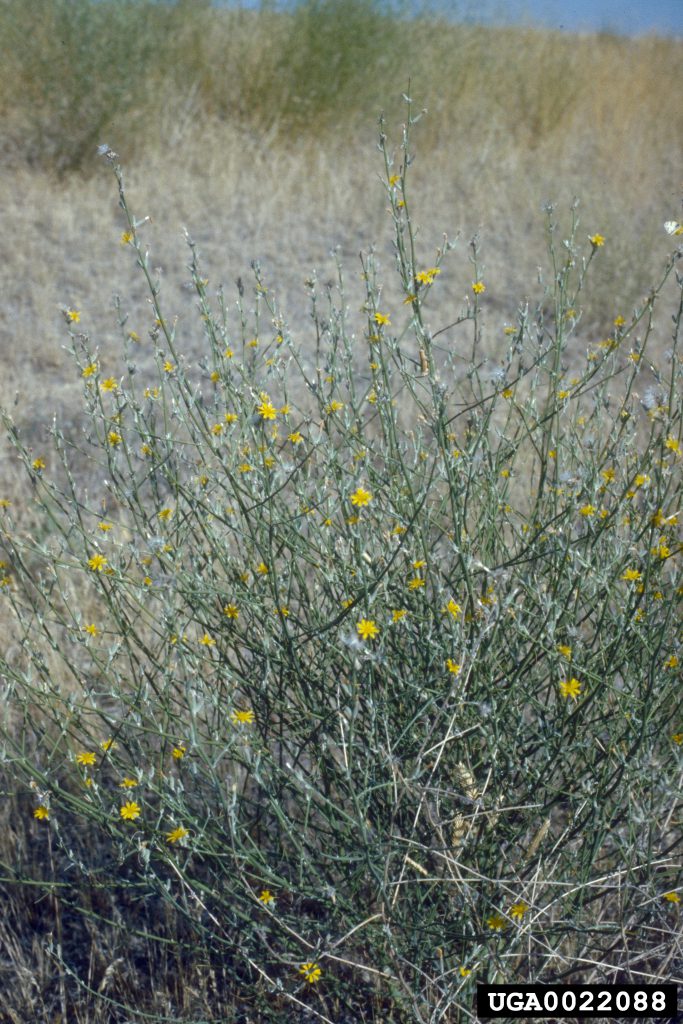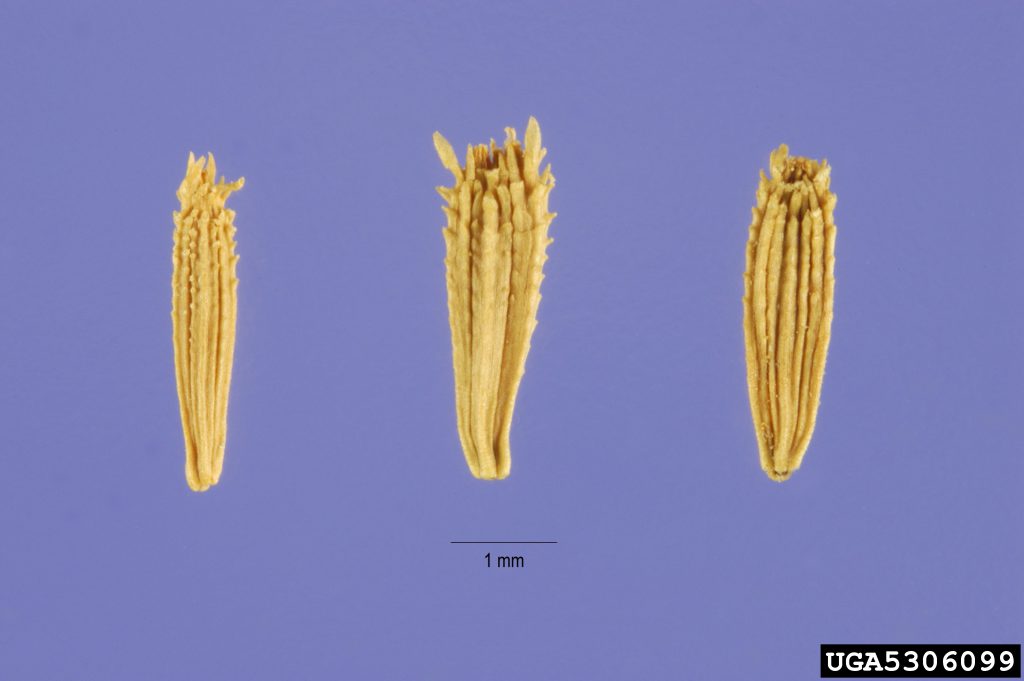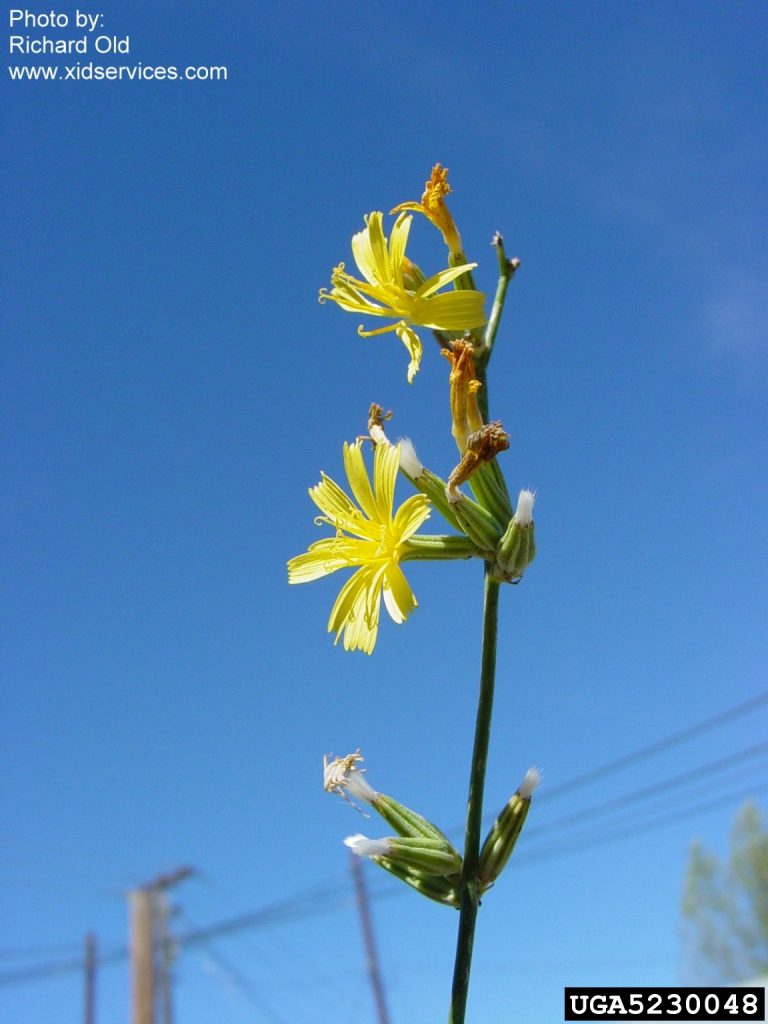Scientific name: Chondrilla juncea
What Is It?
Rush skeletonweed (Chondrilla juncea) is a dandelion-like noxious weed that is native to Eurasia and completes its life cycle after multiple years. It thrives in sunny areas with dry, sandy to gravelly soil. Its woody root can grow more than eight feet deep, making it difficult to remove. It spreads by numerous seeds, lateral-growing roots that can grow new plants, and broken root fragments.
Is It Here Yet?
Yes. Rush skeletonweed is widespread in eastern Washington and many counties in western Washington.
Why Should I Care?
Rush skeletonweed contaminates crops and fouls harvesting machinery. By competing with other plants for resources, it reduces yields of both crops and plants for livestock and wildlife. It is an aggressive competitor that quickly spreads and is very difficult to remove.
How Can We Stop It?
Preventing a new infestation is easier than removing an established one. Do not till soil infested with rush skeletonweed; broken root fragments will grow new plants and spread the infestation. Hand-pulling multiple times a year for several years can be effective to control and remove small infestations. Herbicide is much less effective after the plant starts flowering. However, rush skeletonweed plants are more difficult to find in their rosette phase before producing the taller flowering stems. Herbicide is most effective in the fall, when the weather cools. Biological control methods like gall mites and rust fungus have been released in North America and can be effective at suppressing population growth, but they will not eliminate an infestation..
What Are Its Characteristics?
- Leafless, branching stems growing from dandelion-like circular arrangement of leaves. The leaves are lobed, fuzzy-textured, and have spines on the edge.
- Grows 1-5 feet tall.
- Has ½-inch-wide yellow flowers that turn into wind-dispersed seeds with fluffy white hairs.
- The lower 4-6 inches of the stem has brown hairs that point downwards.
- Sap is milky white.
Additional Photographs




